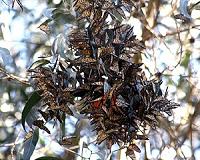| . |  |
. |
Doha (AFP) March 17, 2010 From ivory trinkets to live parrots, the Internet has become a virtual supermarket in imperilled species that is hard to track and even harder to crack, say experts. With a quarter of humanity coming online over the last 15 years, the scale of the problem has caught global wildlife police offguard, according to the 175-nation Convention on International Trade in Endangered Species (CITES), meeting through March 25 in Doha. "Contemporary international law has fallen behind in its consideration of wildlife trade conducted via the Internet," CITES admits. With few resources of its own, CITES has delegated the task of assessing the scope of illicit e-commerce to non-governmental organisations. An ambitious, 11-nation investigation carried out by the International Fund for Animal Welfare (IFAW), released in Doha, has uncovered a flourishing traffic in live animals, including primates, rare reptiles and exotic birds. It also found thousands of products -- supposed culinary delicacies and health potions to jewellery -- extracted from big cats, rhinos, elephants and bears. All the contraband came from flora and fauna listed on CITES Appendix I, which bans international commerce. Specimens and items spotted during a six-week survey in mid-2008 had an advertised value of nearly four million dollars (three million euros). "Overall, the results show a high volume of wildlife trade conducted via the Internet, with thousands of CITES-listed specimens offered for sale on the Internet every week," according to a report of the probe. Seventy percent of the trade was based in the United States, with China and Britain each accounting for about eight percent. Among live species, exotic birds dominated, while ivory was by far the top category among derived products. "It is rarely whole tusks. Usually is it small items," said Celine Sissler-Bienvenue, IFAW's senior elephant expert. Grace Ge Gabriel, who heads the organisation's China operations, has seen a boom in online sales of tiger wine, a combination of rice wine and tiger bones that has been typically aged three, six or nine years. "Online, these ads are mainly targeting the Chinese diaspora," she said. Likewise potions containing bear bile, used in traditional Chinese medicines to treat ailments ranging from liver disorders to haemorrhoids to hepatitis. The fluid is extracted over months or years from live bears through a drip tube surgically inserted through the animal's abdomen. "The Chinese market is saturated, but Canadian and US customs are constantly seizing shipments," Ge Gabriel said. In some cases, Internet sales may be driving species not yet listed under the Convention toward extinction. In Doha, CITES officials highlighted the plight of a small cousin of the salamander called Kaiser's spotted newt (Neurergus kaiser), native to Iran, which has submitted a proposal for Appendix I status to be voted next week. Only 1,000 specimens remain in the wild, experts estimate, but a 2006 Internet survey found several sites advertising the colourful creatures for 300 dollars (220 euros) a piece. "One Ukrainian company said they had sold more than 200 -- all caught in the wild -- in one year," said Ernie Cooper, an investigator in Canada for an environmental NGO called TRAFFIC. Most wildlife sales on the Internet are small-scale, the surveys showed. "The large crime syndicates have much better ways to sell their merchandise, even in shops," said Ge Gabriel. Since 2007, major online auction sites -- including eBay and Chinese giant taobao.com -- have prohibited trade in ivory and live species. But even as law enforcement has begun to crack down, online vendors have become more wily, obfuscating their wares with descriptions such as "made from the teeth of the world's largest land mammal." And even if police can trace an offer to a fixed address, products have often been sold within a matter of hours, officials say.
Share This Article With Planet Earth
Related Links Darwin Today At TerraDaily.com
 Habitat loss wipes out dragonfly, butterfly, beetle species
Habitat loss wipes out dragonfly, butterfly, beetle speciesDoha (AFP) March 16, 2010 The destruction of natural habitats in Europe is wiping out butterfly, beetle and dragonfly species across the region, the updated European "Red List" of endangered species showed Tuesday. "When a Red List like this raises the alarm, the implications for our own future are clear. This is a worrying decline," said EU Environment Commissioner Janez Potocnik. Scientists examining Europe's 4 ... read more |
|
| The content herein, unless otherwise known to be public domain, are Copyright 1995-2010 - SpaceDaily. AFP and UPI Wire Stories are copyright Agence France-Presse and United Press International. ESA Portal Reports are copyright European Space Agency. All NASA sourced material is public domain. Additional copyrights may apply in whole or part to other bona fide parties. Advertising does not imply endorsement,agreement or approval of any opinions, statements or information provided by SpaceDaily on any Web page published or hosted by SpaceDaily. Privacy Statement |